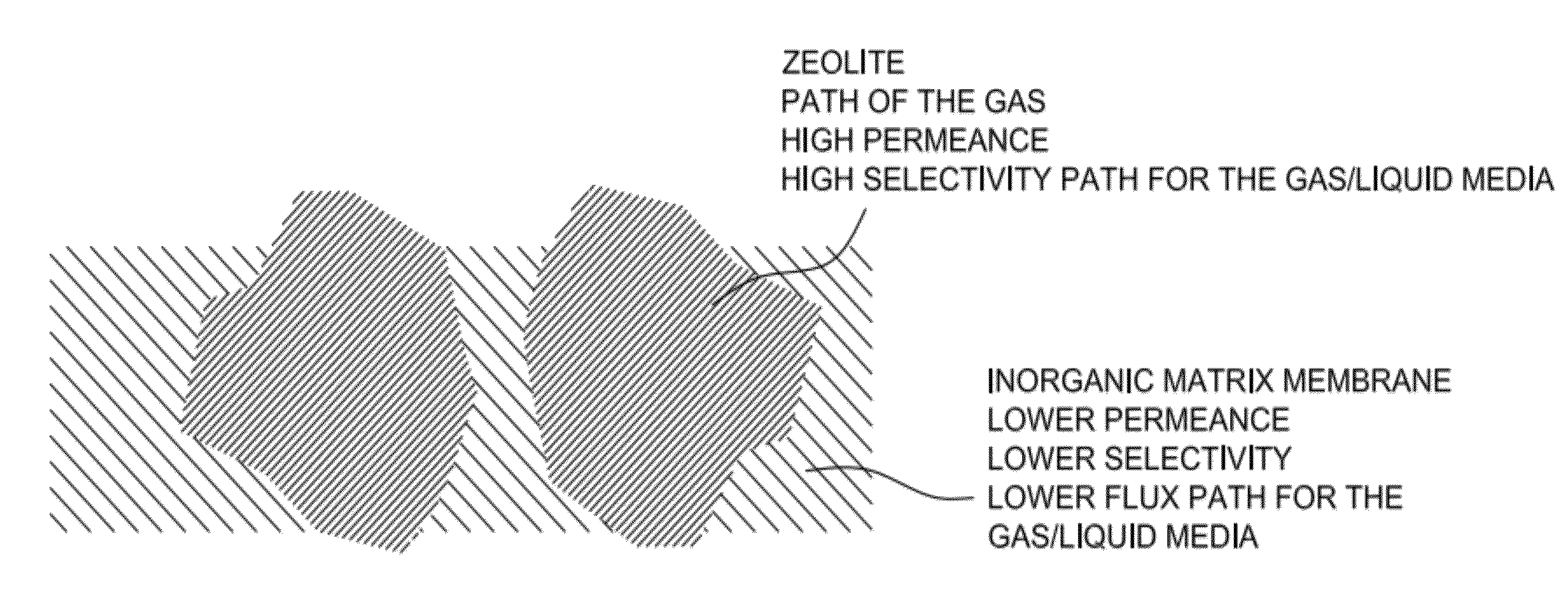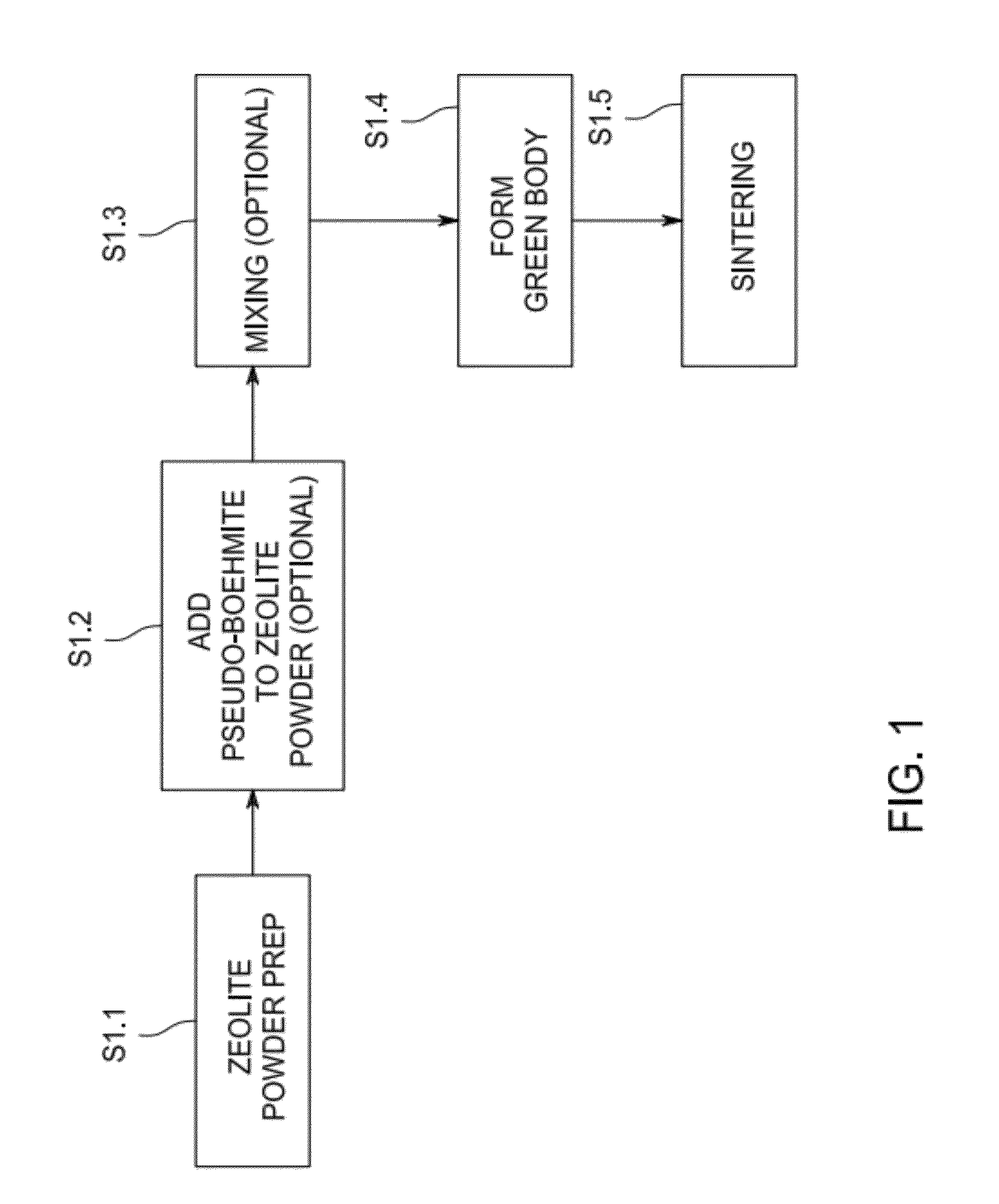Zeolite membrane and methods of making the same
a technology of zeolite and zeolite particles, which is applied in the field of zeolite membrane and methods of making the same, can solve the problems of difficult synthesizing, unsuitable membrane materials, and limited approach to the quality and size of starting rock materials, and achieves the effects of reducing the time required, and reducing the number of zeolite particles
- Summary
- Abstract
- Description
- Claims
- Application Information
AI Technical Summary
Benefits of technology
Problems solved by technology
Method used
Image
Examples
Embodiment Construction
[0044]In general, the zeolite membrane of the invention is fabricated from a dry powder or an aqueous-based slurry that can be either free-standing or flow coated onto a porous support structure, such as ceramic, and the like.
[0045]In one embodiment, the slurry is a multi-component colloidal sol gel precursor. The slurry is designed to be used in a pump feed-able stock solution that can either be deposited on planar surfaces, tape cast into sheet form or feed into the inside diameter of tube structures. The ratio of the precursors is critical to determine or set the final properties of the matrix structure. Once the composite membrane is thermally set or sintered, the resulting matrix should not contain any open porosity or interconnected porosity such that the flux through the matrix is far lower than the zeolite particles. In addition, the resulting composite membrane does not contain any significant defects, thereby allowing a primary alternative path for media separation.
[0046]T...
PUM
| Property | Measurement | Unit |
|---|---|---|
| particle size | aaaaa | aaaaa |
| temperature | aaaaa | aaaaa |
| thickness | aaaaa | aaaaa |
Abstract
Description
Claims
Application Information
 Login to View More
Login to View More - R&D
- Intellectual Property
- Life Sciences
- Materials
- Tech Scout
- Unparalleled Data Quality
- Higher Quality Content
- 60% Fewer Hallucinations
Browse by: Latest US Patents, China's latest patents, Technical Efficacy Thesaurus, Application Domain, Technology Topic, Popular Technical Reports.
© 2025 PatSnap. All rights reserved.Legal|Privacy policy|Modern Slavery Act Transparency Statement|Sitemap|About US| Contact US: help@patsnap.com



